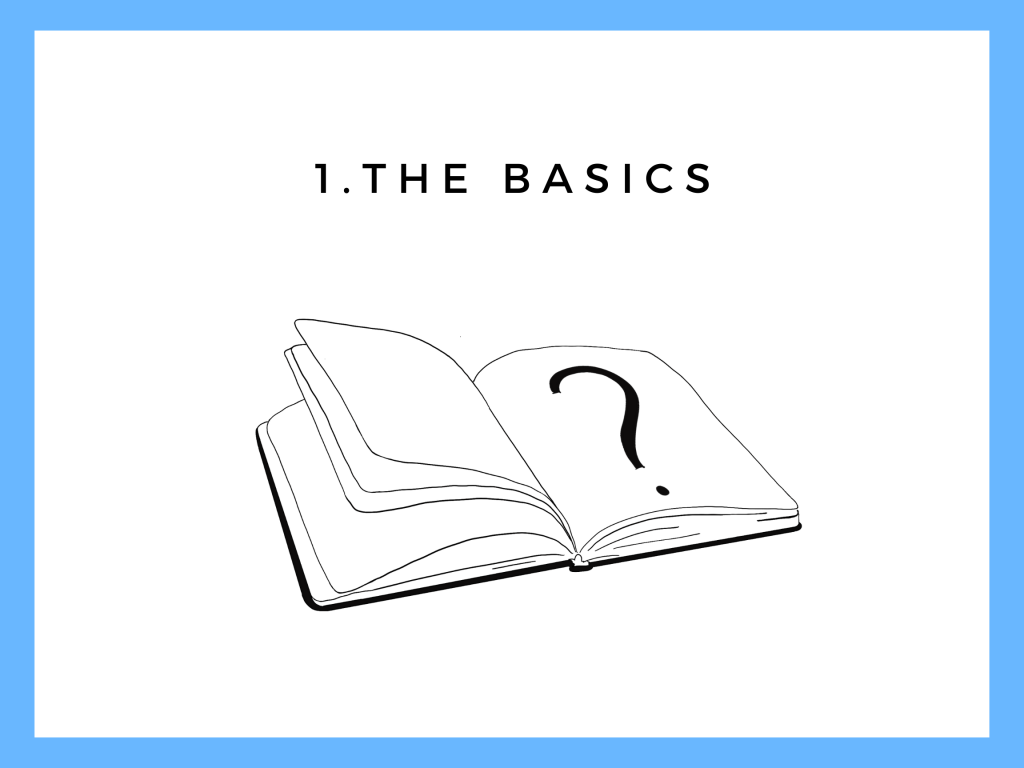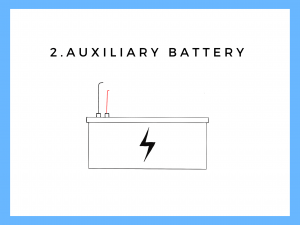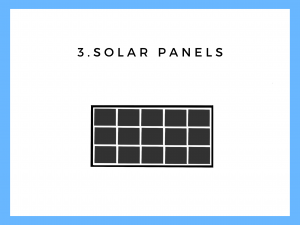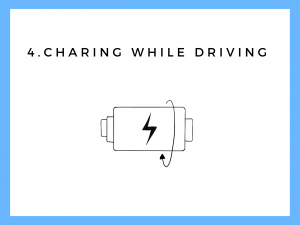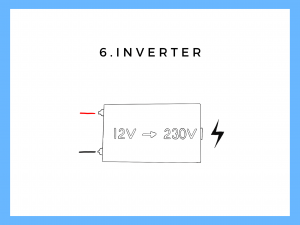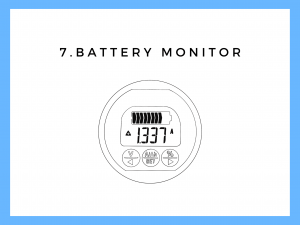1. How it works.
The power supply in your campervan, the electrical system, works quite simply in the basics. It starts with the auxiliary battery, which can store energy and then supply it again. Generating energy can be done via three possibilities: solar panels, the alternator or via shore power.
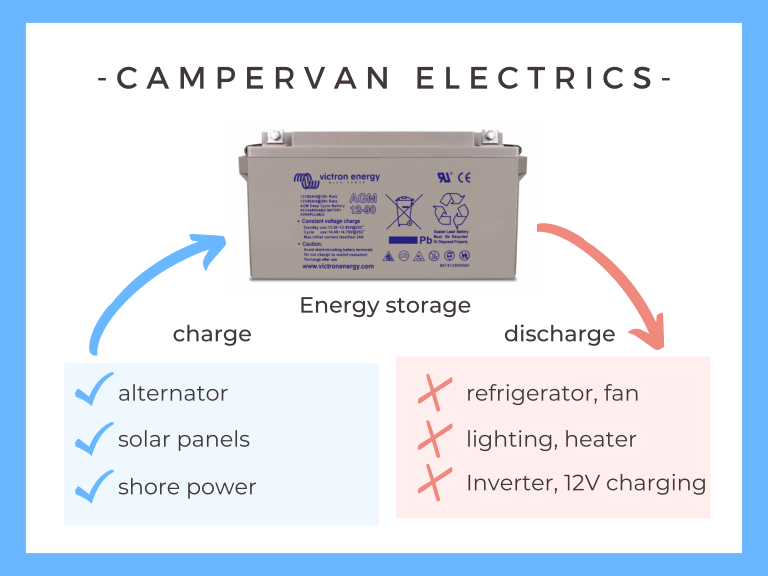
Important electrical terms:
Electrical systems have many similarities to water systems. Understanding how water works in a water system will help you understand how electricity works in an electrical system.
Voltage = Volts (V).
Voltage can be compared to the pressure that pushes water through a hose. The higher the pressure, the higher the voltage.
Current = Amps (A)
Amperage can be compared to the thickness of a hose. The wider the hose, the more water can pass through it.
Power = Watt (W)
Power is the amount of water that runs through a hose, depending on the pressure and width of the hose.
Calculation
To calculate, for example, a cable size, you will sometimes need to make calculations.
Watt = Volt x Ampere
Amps = Watts : Volts
Example: To calculate the cable size of an inverter you want to know the maximum current (Amps). The inverter has a capacity of 200 Watts and your auxiliary battery has a voltage of 12 Volts.
Amp = Watt : Volt
200 : 12 = 16,6A
Direct current and Alternating current
Direct current is announced as DC and is used in your vehicle’s battery.
Alternating current is announced as AC and this is used in the home. To use this in your RV you will need to use an inverter.
Series and Parallel connection
Series connection
In a series connection the plus of one battery is connected to the minus of the other battery. The Voltage of both batteries is added together, but the Ah (Amp-hour) remains the same.
Parallel connection
Plus and minus poles are connected together. The capacity of the batteries is added together but the Voltage remains the same.
The advantages and disadvantages of these circuits will be discussed further in the next blog.
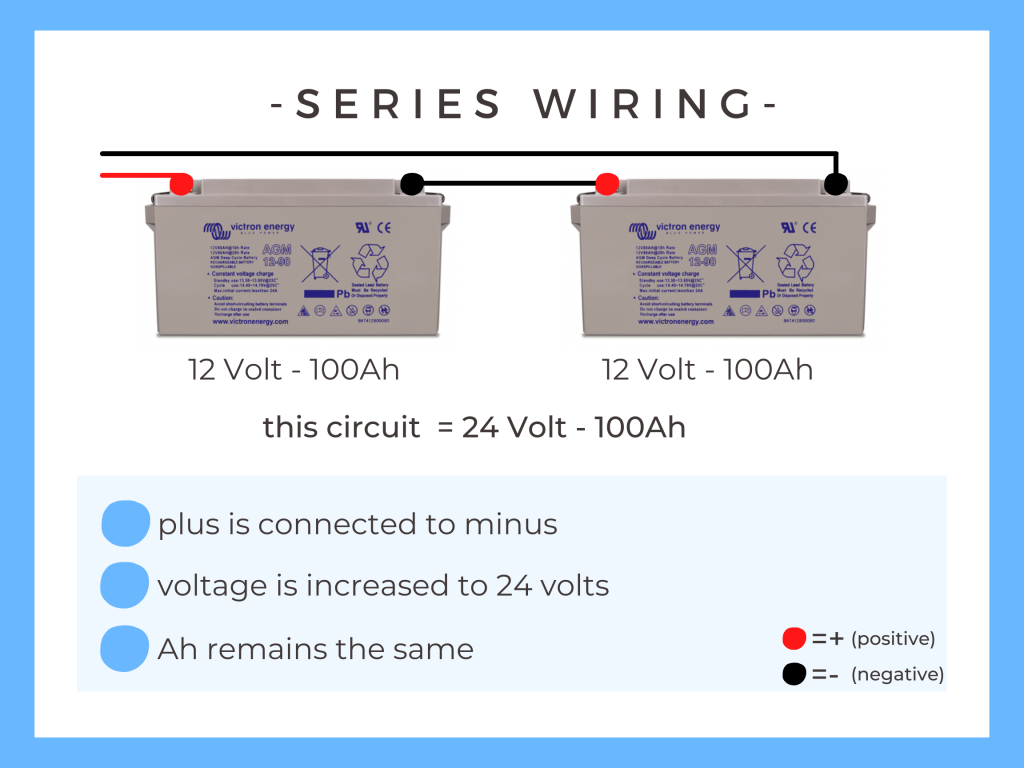
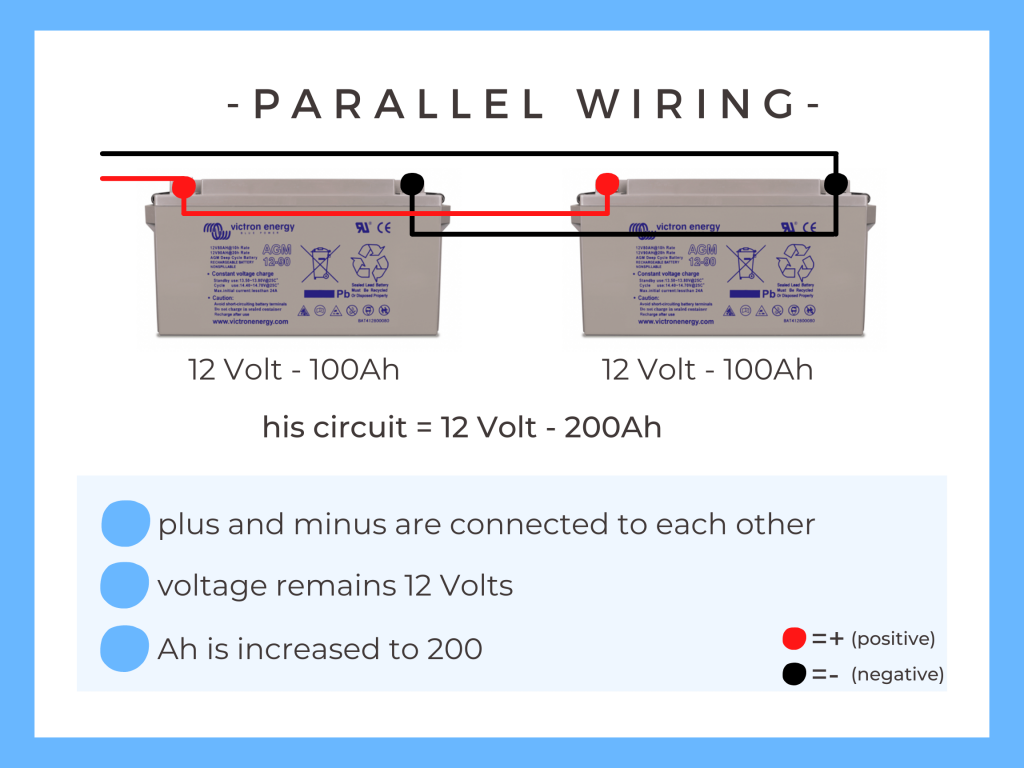
2. Electricity supply campervan
When installing electricity in your camper, there are a few things to consider. You have to know how you want to travel and what devices you want to use and install. One person has more than enough to use 12V Led lighting with a USB charger and the other wants to watch television and cook on induction.
Next, you consider what kind of traveler you are. Are you mainly connected to shore power on a campsite? Then a smaller battery with a shore power connection might be enough for you. Or are you someone who wants to spend a few days off-grid in nature? Then it is convenient to mount solar panels on your roof in combination with a DC-DC charger.
- Determine your camping style: at the campsite on electricity or a few days off-grid.
- Determine your facilities: cooking on induction or single usb charger.
Calculate power consumption
Once you know what equipment you want to install in your campervan you can make an estimate of your power consumption. We do this by adding up all the consumers. Think of charging your phone, electric bicycle, lights or your refrigerator. You have to determine the total power (Watts) of all the devices you want to use. You can find this on the charger of the device, user manual or on Google. You also need to make an estimate of how many hours you will be using these devices each day. Then you fill in this information in our handy tool: the calculator.
Calculator
We have developed this program to make things easier for you. You can use it for the following things:
- Easily calculate the estimated consumption
- Recommends the right size inverter for your consumption
- Advise how many solar panels you need, depending on your usage
- Advice on the size of your leisure battery
Click on “Lot and Gijs on trip consumption” to see what our consumption is.
3. Charging the auxiliary battery
Now that you have insight into the consumption, the next step is to determine how you are going to charge the auxiliary battery. As mentioned at the beginning, there are three ways of charging: via solar panels, the alternator, or shore power. Which method is most suitable for you depends on a number of things:
- If you are only on a campsite, then shore power alone may be all you need.
- If you are occasionally without shore power, solar panels may be the solution.
- If you are rarely on a campsite and drive every day: then charging via the alternator and solar panels would be a good solution.
Charging via the alternator is never wrong, even if you mainly only stay on campsites, you will still have to drive there.
4. Electrical wiring diagram for campervans
If you have read through the above chapters you now know the following things:
- What the estimated consumption is.
- Size of the inverter.
- How many solar panels you will need.
- Size of the charge controller.
- The capacity of the auxiliary battery.
- The way(s) you want to charge the auxiliary battery.
The next step is to make Electrical Wiring Diagram. In this diagram you fill in all your power supplies and consumers. To give you a helping hand we have developed a file in which you can design your unique wiring diagram.
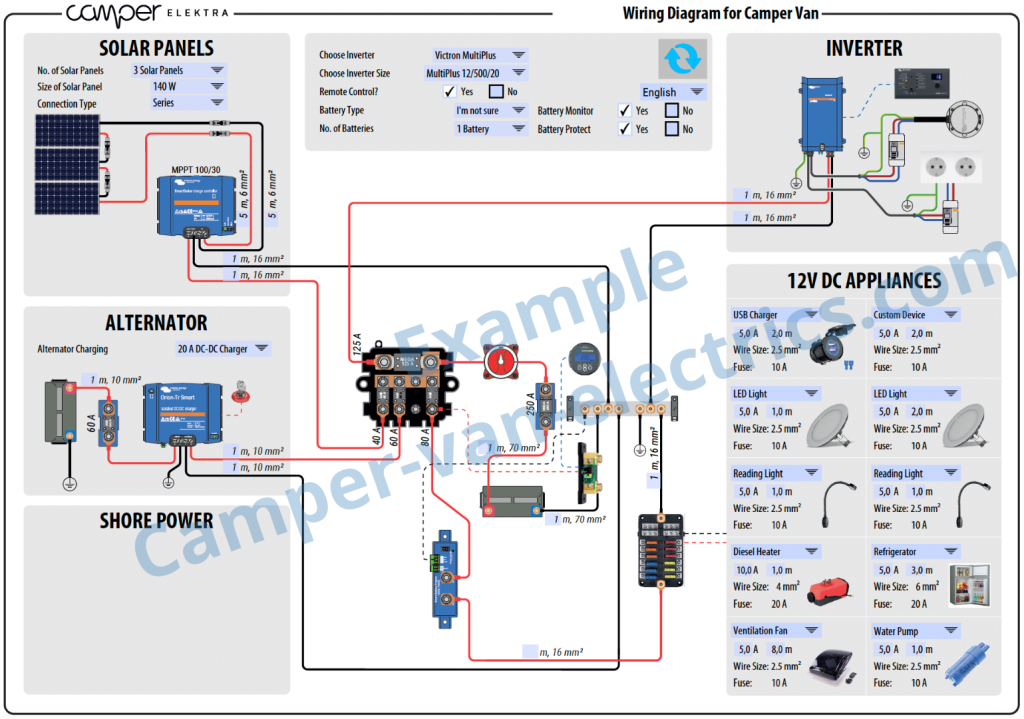
Hey! By the way… any links on this page that lead to products on Amazon are affiliate links and I earn a commission if you make a purchase. Thanks in advance – I really appreciate it!
